Maintaining a large garden can feel like a daunting task, especially when it comes to keeping it beautiful throughout the year.
I’ve often found myself wondering how I can create a vibrant space that changes with the seasons while minimizing the upkeep.

From selecting versatile plants to incorporating design elements that withstand changing weather, it’s all about making thoughtful choices.
By planning ahead and being mindful of seasonal shifts, you can ensure that your garden remains a delightful retreat, no matter what time of year it is.
Plant Evergreen Shrubs
I love incorporating evergreen shrubs in my garden for year-round beauty.
They maintain their foliage, providing consistent color and structure, regardless of the season.
One of my favorites is Abelia.
It’s versatile and works well in various planting styles.
Plus, it thrives in both full sun and partial shade.
Another great option is the Sprinter® boxwood.
It has glossy leaves and a compact shape, making it perfect for low hedges or garden borders.
It’s very hardy and can handle a range of sunlight conditions.
Yews also make a fantastic choice.
They can grow quite tall but respond well to pruning, so I can shape them as I like.
Finally, I often plant Eastern Redcedar shrubs.
They come in various sizes, with some staying low to the ground.
They add height and texture without overwhelming the space.
Whether I’m looking for height, shape, or color, evergreen shrubs always add that extra touch to my garden throughout the year.
2) Install a Water Feature
Adding a water feature to my garden has transformed the space into a peaceful retreat.
I love the soothing sounds of trickling water, which create a calming atmosphere.
There are so many options to consider, like a small fountain or a larger pond.
I find that a simple wall water feature can make a cozy nook for relaxing with friends.
Another idea is a water table feature.
It can be nestled into a seating area and act as a central focal point.
I enjoy watching birds visit, which adds more life to my garden.
For those with a bit of DIY spirit, I’ve seen great results from adding lighting around the feature.
It highlights the water’s movement and makes the space inviting during the evening.
When choosing a design, I keep in mind the layout of my garden.
A well-placed water feature can guide the flow of the landscape.
Whether it’s natural stone or a sleek modern design, it’s all about personal preference.
3) Create a Wildflower Meadow

Creating a wildflower meadow in my garden adds beauty and attracts wildlife.
I love choosing a sunny spot, as most wildflowers thrive in bright light.
To start, I prepare the area by raking the soil until it’s fine and removing any weeds or stones.
This gives my seeds a clear path to grow.
Then, I scatter the seeds evenly across the soil.
Mixing seeds with dry sand makes it easier to distribute them.
After that, I gently rake the soil and water it lightly.
I prefer planting in the fall, allowing the roots to establish before winter.
However, spring planting works too, just after the last frost.
Using native wildflowers ensures they’re well-suited to my climate.
They provide essential food for pollinators, adding vibrant colors and textures to my garden year-round.
4) Use Mulch for Weed Control
I find that mulch is one of the best tools for keeping weeds at bay in my garden.
By applying a layer of mulch, I can significantly reduce the amount of time I spend weeding.
First, I clear any existing weeds from the area.
This gives me a fresh start.
Loosening the soil also helps, as it encourages better root growth.
Next, I apply a layer of mulch that’s about 2 to 4 inches thick.
I’ve learned that if it’s too thin, it won’t effectively suppress weeds.
If it’s too thick, it can suffocate my plants.
I prefer organic mulches like wood chips or shredded bark.
They not only control weeds but also enrich the soil as they break down.
When I use mulch effectively, I notice fewer weeds popping up, which means more time to enjoy my beautiful garden!
5) Add a Colorful Garden Bench
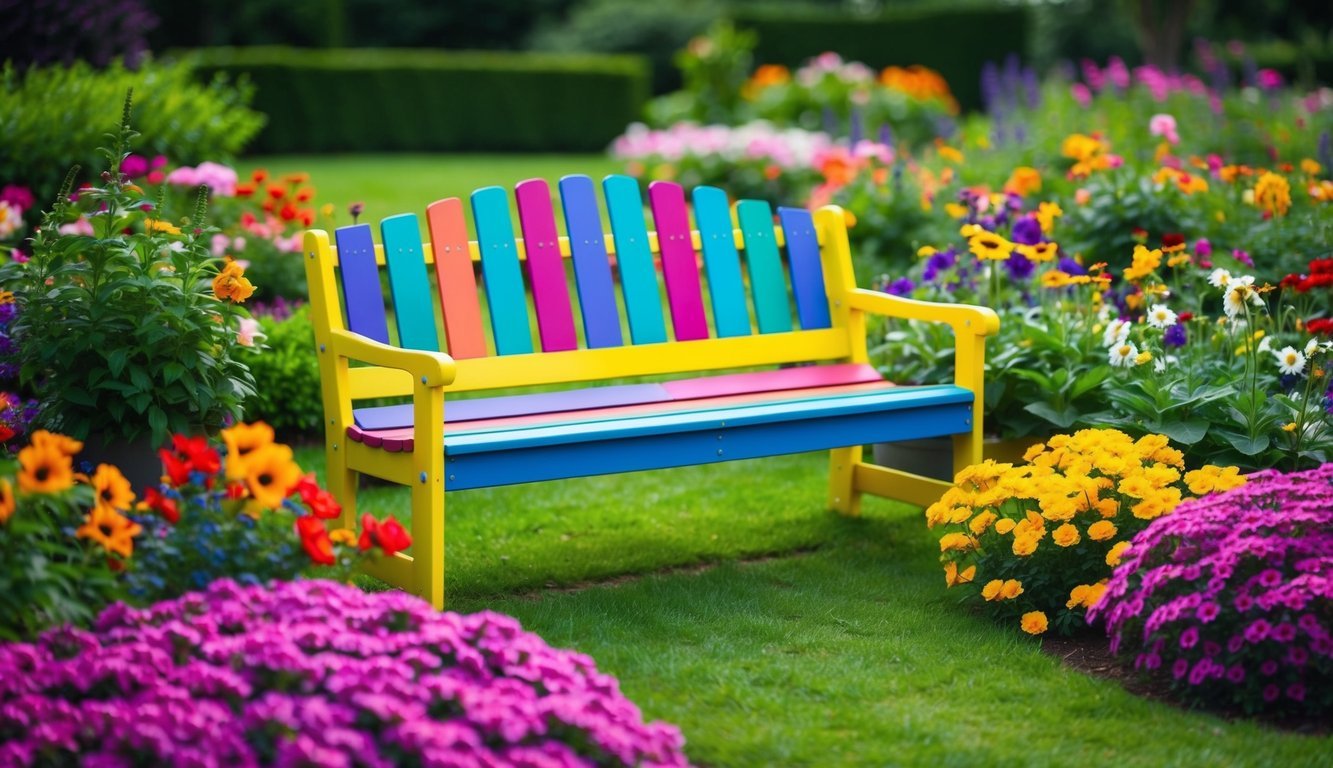
Adding a colorful garden bench can really brighten up my outdoor space.
It serves not just as a functional piece but also as a great focal point.
I love choosing a color that contrasts beautifully with the surrounding greenery.
A vibrant red or cheerful yellow can make my garden feel more alive and inviting.
I often place the bench in a spot that offers a nice view.
Whether it’s overlooking a flower bed or just a quiet corner of my yard, it becomes a perfect spot to relax.
Maintaining the bench is simple, whether it’s a wooden slat design or a modern metal piece.
I can easily clean it and refresh the paint when needed.
For a creative touch, I’ve even considered using cinderblocks to create a unique planter bench.
This adds not only seating but also extra plant space, enhancing the garden’s charm.
A colorful garden bench transforms an ordinary garden into something special.
It invites me to sit back, unwind, and enjoy the beauty of my surroundings.
6) Plant a Border of Lavender
I love the idea of planting a border of lavender in my garden.
It adds a vibrant splash of color and a lovely aroma that enhances the overall vibe of the space.
Lavender thrives in well-drained soil and needs plenty of sunlight, making it perfect for sunny spots.
I usually plant it along pathways or the edges of my flower beds.
This creates a beautiful frame for my garden.
Besides looking great, lavender attracts pollinators like butterflies and bees.
It’s a win-win for my garden’s ecosystem.
Plus, it’s drought-tolerant, which means it requires less maintenance, freeing up my time for other gardening tasks.
Mixing lavender with plants like Cosmos can create a striking contrast.
Their different colors and textures really complement each other.
I find that a lavender border not only helps structure my garden but also provides a calming scent, especially during the warmer months.
It’s one of my favorite ways to keep my garden beautiful year-round.
7) Install Solar Garden Lights
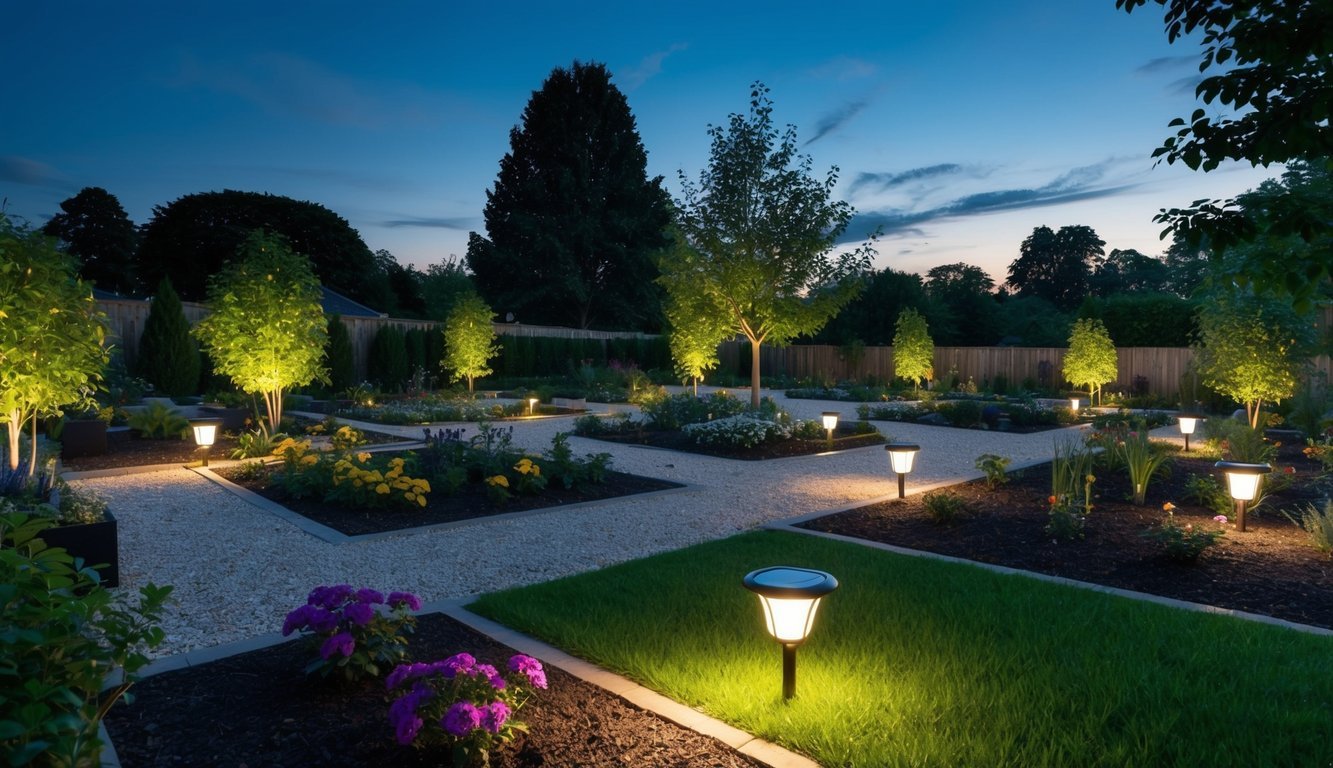
Installing solar garden lights is a game-changer for my outdoor space.
They not only brighten up my garden but also add a warm ambiance at night.
I love how easy they are to set up since they don’t require any wiring.
I can place them wherever I want, whether it’s lining a pathway or highlighting specific plants.
There are plenty of styles to choose from, including post-top lamps and stylish tabletop designs.
Some even come in fun shapes, which adds a personal touch to my garden decor.
Using solar lights also helps me save on electricity.
During the day, the solar panels charge, providing a sustainable lighting solution by night.
Plus, they make the garden look inviting and safe when entertaining guests after sunset.
8) Add a Birdhouse or Bird Feeder

Adding a birdhouse or bird feeder to my garden brings vibrant life and color throughout the year.
I love how different species of birds visit, adding a cheerful soundtrack to my outdoor space.
Choosing the right design for a birdhouse can reflect my personality.
For a touch of fun, I might opt for a themed birdhouse, like the TARDIS from Doctor Who, which also attracts feathered friends.
Bird feeders come in various styles, too.
I’ve made simple ones from pine cones covered in peanut butter and birdseed.
It’s an enjoyable weekend project that creates a charming rustic look.
If I prefer something a bit more sophisticated, I can explore modern or mosaic feeders that add an artistic flair.
No matter the style, having a feeder means welcoming a variety of birds, which adds to the garden’s beauty.
Watching them feed is not just entertaining; it also helps pollinate my plants, making the garden thrive.
9) Plant Seasonal Flowers

I love the idea of planting seasonal flowers to keep my garden vibrant throughout the year.
Different flowers bloom in various seasons, creating a dynamic display that changes with time.
In spring, I often choose tulips and daffodils.
They bring such a cheerful start after winter.
For summer, sunflowers and zinnias add bright colors and attract pollinators.
As the weather cools, I look for chrysanthemums and asters.
They extend the blooming season into fall quite beautifully.
I find that a mix of annuals and perennials keeps things interesting, too.
I always check the bloom times and plant accordingly.
This way, my garden stays colorful without gaps.
Regular deadheading also helps extend the flowering period for many plants.
With careful planning, I can enjoy the beauty of flowers from early spring through late fall.
Each season offers something unique, making my garden a delightful place to be year-round.
10) Create a Vegetable Patch
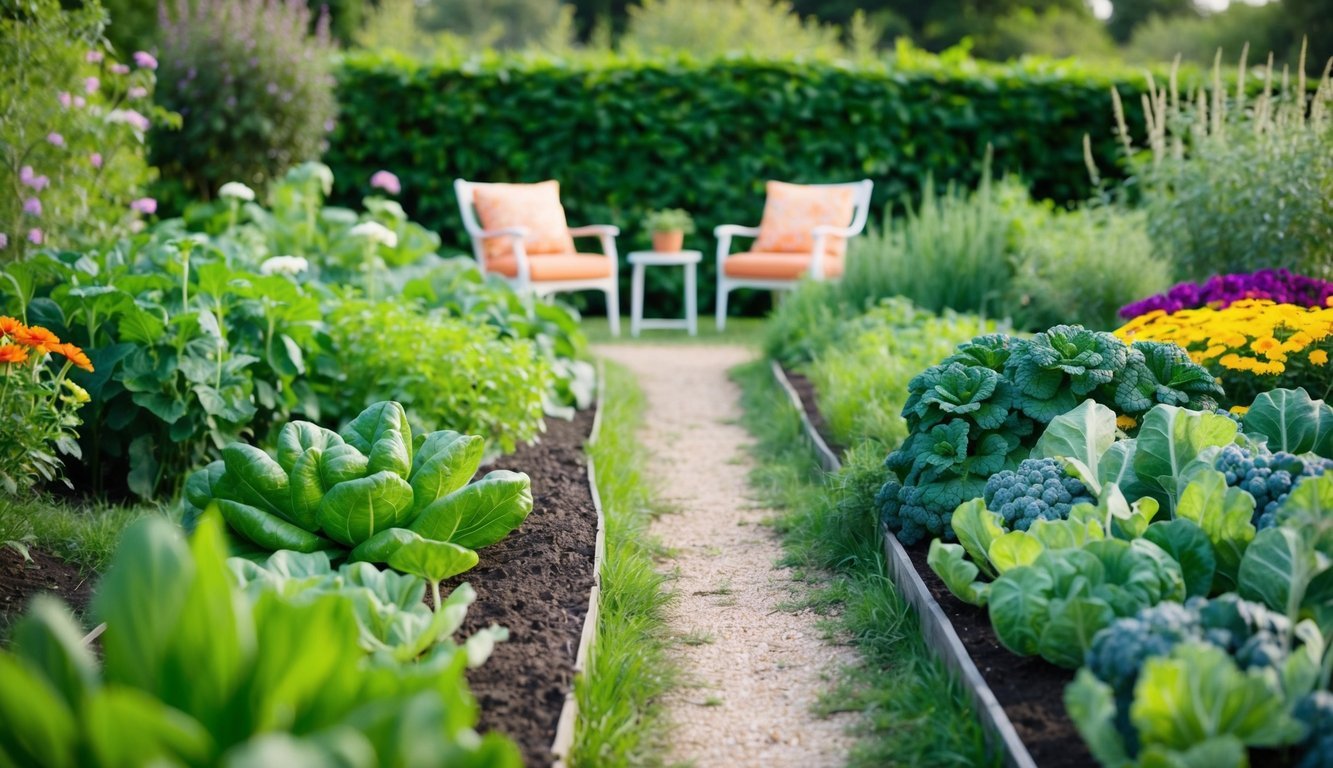
I love having a vegetable patch in my garden.
It not only provides fresh produce but also adds beauty and structure to my outdoor space.
To start, I clear the area of grass and weeds.
This helps prevent competition for nutrients and keeps my plants healthy.
A shovel or hoe works well here, but for larger spaces, a rototiller makes it easier.
I like to design my vegetable patch with defined beds.
This gives it a neat look and makes it easier to manage.
Plus, maintaining clean edges really enhances the aesthetics.
When selecting vegetables, I choose a mix of colors and shapes.
Eggplants and red cabbages look striking, while herbs like thyme and parsley add greenery and texture.
Incorporating flowers can brighten the vegetable patch.
Plants like marigolds not only look beautiful but also deter pests.
Mixing edible plants with ornamental ones creates a vibrant and productive garden.
With proper care, my vegetable patch thrives throughout the seasons, becoming a focal point in my garden.
Whether I’m harvesting or simply enjoying the view, it always brings me joy.
Seasonal Plant Care
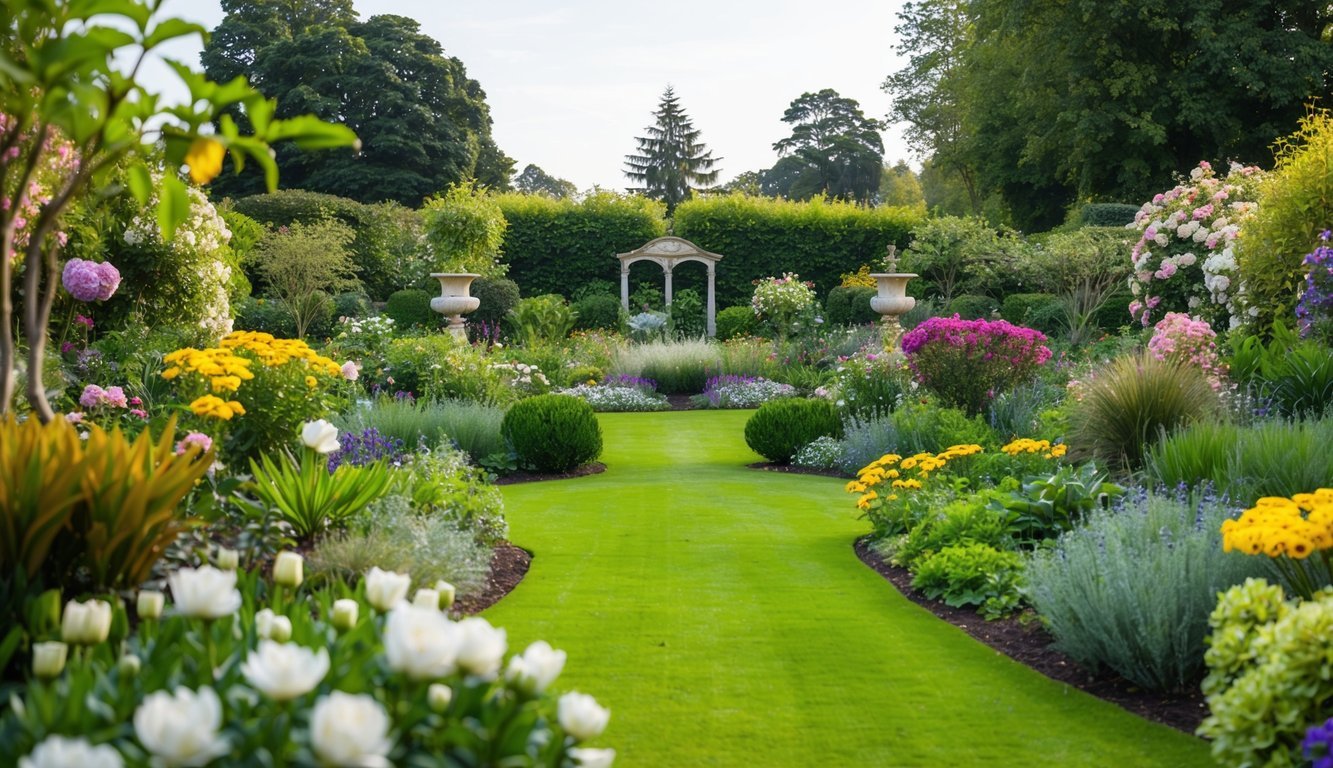
Caring for your garden through the changing seasons is essential to keep it vibrant and healthy.
Each season brings its own tasks and focus areas to ensure plants thrive throughout the year.
Spring Awakening
As the cold weather subsides, it’s time to give your garden some TLC.
I start by removing debris that accumulated over winter.
This helps prevent pests and diseases from taking hold.
Next, I prune any dead branches from shrubs and trees.
This promotes new growth and improves air circulation.
I also focus on fertilizing the soil.
Choosing a balanced fertilizer enriched with nitrogen really boosts plant health.
It’s essential for those blooming perennials to flourish.
Spring is the perfect time for planting too.
I choose bulbs like tulips or daffodils for a pop of color later on.
It’s also wise to check for pests as the weather warms up.
Summer Maintenance
Summer maintenance is all about keeping plants hydrated and healthy.
Watering is crucial, especially in hot spells.
I make sure to water deeply a few times a week rather than shallow daily watering.
This encourages deep root growth.
Next, I focus on weeding regularly.
Weeds compete for nutrients and water, so I pull them out before they take over.
Deadheading flowers, or removing spent blooms, helps prolong flowering.
I enjoy watching my garden continually bloom through summer.
Additionally, applying mulch reduces weed growth and retains moisture in the soil.
It’s a simple trick that pays off big time!
Fall Preparations
As summer fades, preparing for fall is key.
I begin by planting bulbs for spring blooms.
This way, I can look forward to those lovely flowers when winter breaks.
I also spend time tidying up my garden.
I cut back perennials after they die back but leave some plants intact for winter interest and wildlife.
Adding compost to garden beds in fall boosts soil fertility for the coming seasons.
It’s like giving back to the earth.
Also, I ensure my trees and shrubs are well-watered before the ground freezes.
This helps them withstand winter’s chill better.
Winter Protection
Winter can be tough on plants.
I prioritize protecting my garden from harsh conditions.
First, I cover delicate plants with burlap or protective fabric.
This shields them from frost and wind.
I also apply a thick layer of mulch to insulate the soil.
This keeps the roots warm and retains moisture.
In addition, I avoid pruning during winter.
Pruning can stimulate new growth that won’t survive the cold.
Instead, I focus on ensuring everything is tidy and ready for spring.
Soil and Fertilization
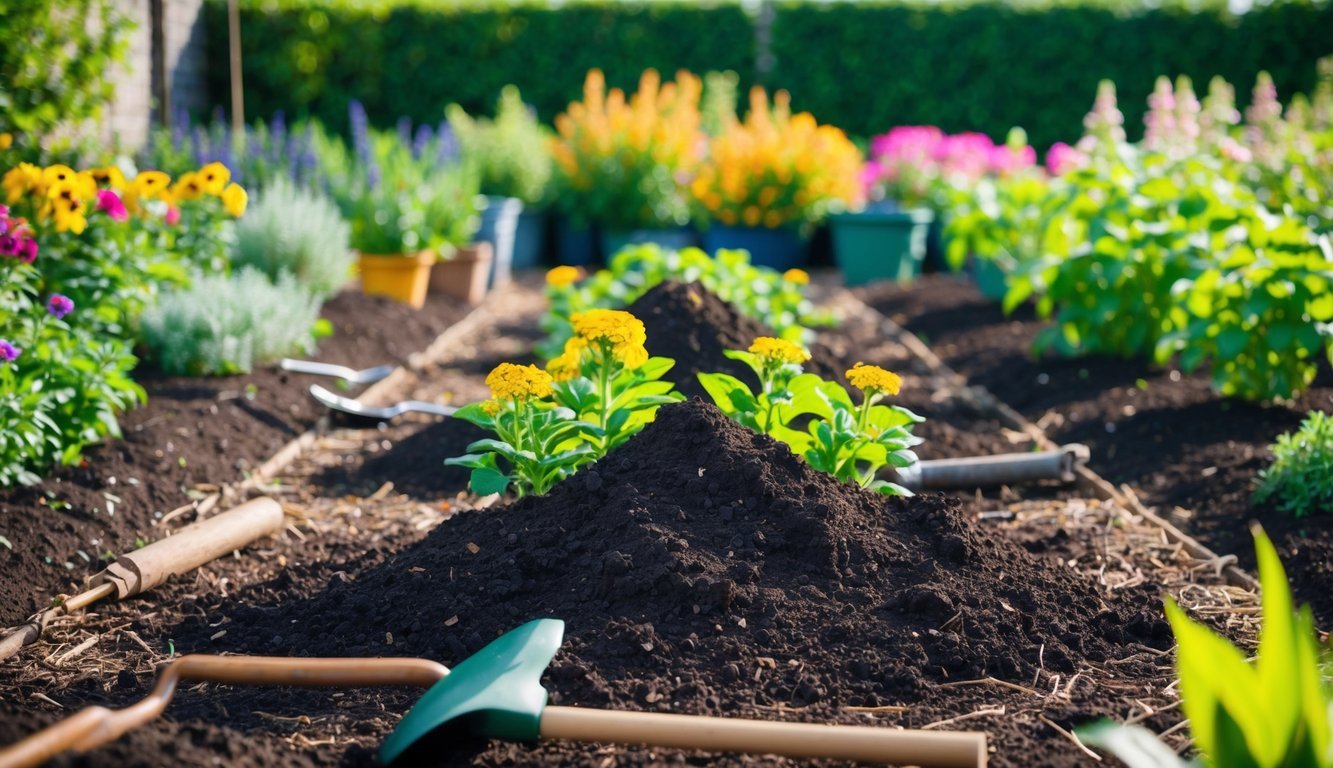
Maintaining optimal soil and selecting the right fertilizer are crucial steps for a thriving garden.
Healthy soil supports plant growth, while appropriate fertilization provides essential nutrients.
Here’s what I consider when managing my garden’s soil and fertilizer needs.
Understanding Soil Types
Soil types significantly influence how well plants grow in my garden.
The main categories are clay, sand, silt, loam, and chalk.
Each type has unique characteristics and drainage capabilities.
- Clay: Retains moisture but drains poorly.
- Sand: Drains quickly but doesn’t hold nutrients well.
- Silt: Holds moisture and nutrients, which is beneficial for most plants.
- Loam: A mix of clay, sand, and silt; considered ideal for gardening due to its balanced properties.
I always start by testing my soil to understand its composition.
This way, I can amend it appropriately, perhaps by adding compost or organic matter to improve structure, drainage, and nutrient content.
Choosing the Right Fertilizer
Selecting the right fertilizer depends on the specific needs of my plants and the soil type.
My go-to choices are organic options, like compost or well-rotted manure.
For a quick reference on fertilizer types, see the table below:
| Fertilizer Type | Benefits |
|---|---|
| Organic | Improves soil structure; slow-release nutrients. |
| Synthetic | Provides immediate nutrient availability; easy to apply. |
| Slow-release | Gradually provides nutrients over time; reduces frequency of application. |
I pay attention to N-P-K ratios (Nitrogen, Phosphorus, Potassium) when choosing fertilizers.
Each nutrient plays a specific role, like promoting strong root growth or enhancing flowering.
Balancing these helps me maintain a vibrant garden year-round.

